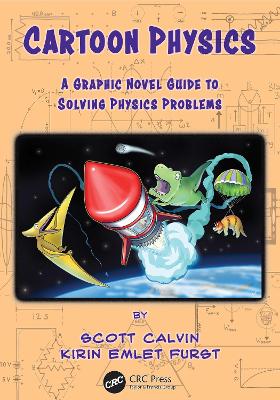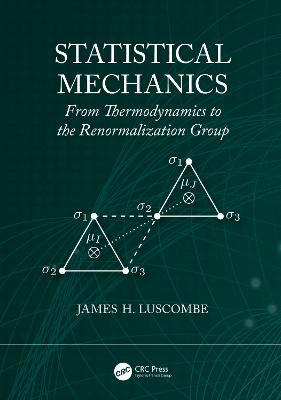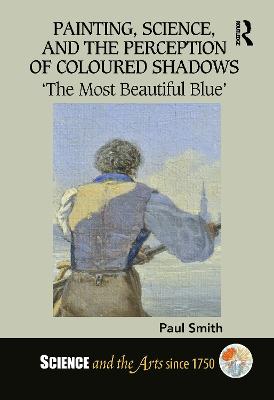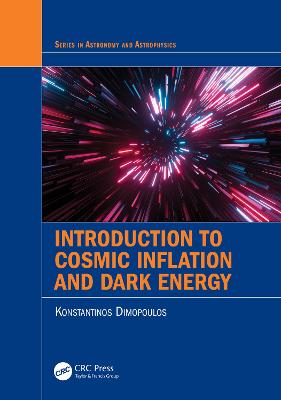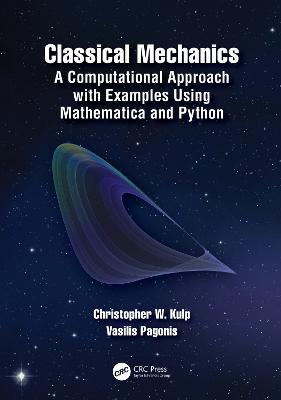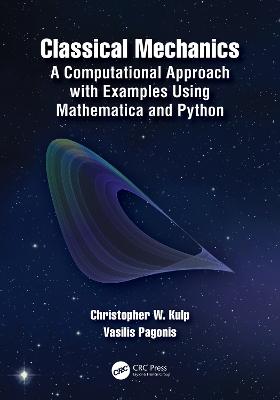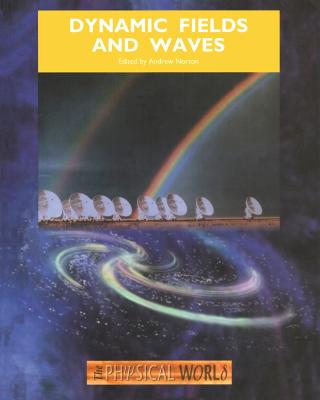Information and Measurement
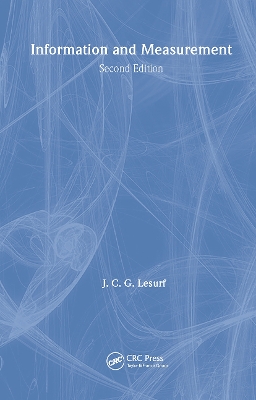 -10%
portes grátis
-10%
portes grátis
Information and Measurement
Lesurf, J.C.G
Taylor & Francis Ltd
09/2023
310
Dura
Inglês
9781138429949
15 a 20 dias
Descrição não disponível.
Preface
Chapter 1 - Where does information come from?
1.1 Introduction
1.2 What is information?
1.3 Accuracy and resolution
Chapter 2 - Signals and messages
2.1 Sending information
2.2 How much information in a message?
Chapter 3 - Noise
3.1 The sources of noise
3.2 Johnson noise
3.3 Shot noise
3.4 An alternative way to describe noise
3.5 Other sorts of noise
Chapter 4 - Uncertain measurements
4.1 Doubtful information and errors
Chapter 5 - Surprises and redundancy
Chapter 6 - Detecting and correcting mistakes
6.1 Errors and the law!
6.2 Pa1ity and blocks
6.3 Choosing a code system
Chapter 7 - The sampling theorem
7.1 Fourier transforms and signals of finite length
7.2 The sampling theorem and signal reconstruction
Chapter 8 -The information carrying capacity of a channel
8.1 Signals look like noise!
8.2 Shannon's equation
8.3 Choosing an efficient transmission system
8.4 Noise, quantisation, and dither
Chapter 9 - The CD player as an information channel
9.1 The CD as an information channel
9.2 The CD encoding process
Chapter 10 - The CD player as a measurement system
Chapter 11 - Oversampling, noise shaping, and digital filtering
11.1 The CD player as a digital signal processing system
Chapter 12 - Analog or digital?
12.1 Is the world 'analog'?
12.2 The 'digital' defects of the long playing record
Chapter 13 - Sensors and amplifiers
13.1 Basic properties of sensors
13.2 Amplifier noise
13.3 Specifying amplifier noise
Chapter 14-Power coupling and optimum S/N
14.1 Optimising signal/noise ratio
14.2 Behaviour of cascaded amplifiers and transmission lines
Chapter 15 - Signal averaging
15.1 Measuring signals in the presence of noise
15.2 The problems of simple averaging
Chapter 16 - Phase sensitive detection
Chapter 17 - Synchronous integration
17.1 'Boxcar' detection systems
17.2 Multiplexed and digital systems
Chapter 18 - Data compression
18.1 Run-length encoding
18.2 Huffman coding
Chapter 19-Data thinning
19.1 The discrete cosine transform
19.2 JPEG compression
19.3 ATRAC audio compression
Chapter 20- Chaos rules!
20.1 Driven nonlinear systems and bifurcations
20.2 Chaotic oscillators
20.3 Noise generators
Chapter 21 - Spies and secret messages
21.1 Substitution codes
21.2 One time pads
21.3 Mechanical 'randomising' algorithms
21.4 Electronic encryption
Chapter 22 - One bit more
22.1 Problems with many bits
22.2 One bit at a time
22.3 From many to one
22.4 First order delta-sigma conversion
22.5 One last bit of chaos!
Chapter 23 - What have we here?
23.1 Distinguishing messages
23.2 Correlation
23.3 The effects of noise
23.4 Signal recognition using correlation
Chapter 24 - Time and frequency
24.1 The meaning of frequency
24.2 Time and counting
24.3 Effect of noise on counting methods
24.4 Relationship between SNR and jitter level
Chapter 25 - Frequency measurement systems
25.1 Phase lock methods
25.2 Resonators and filters
25.3 Fourier transform specu?oscopy
Appendix 1 - Solutions to numerical questions
Appendix 2 - Programs Getting the message Fornier transforms
Fast Fourier transformation Sine oversampling Encrypting information Finding p1ime numbers
Index
Chapter 1 - Where does information come from?
1.1 Introduction
1.2 What is information?
1.3 Accuracy and resolution
Chapter 2 - Signals and messages
2.1 Sending information
2.2 How much information in a message?
Chapter 3 - Noise
3.1 The sources of noise
3.2 Johnson noise
3.3 Shot noise
3.4 An alternative way to describe noise
3.5 Other sorts of noise
Chapter 4 - Uncertain measurements
4.1 Doubtful information and errors
Chapter 5 - Surprises and redundancy
Chapter 6 - Detecting and correcting mistakes
6.1 Errors and the law!
6.2 Pa1ity and blocks
6.3 Choosing a code system
Chapter 7 - The sampling theorem
7.1 Fourier transforms and signals of finite length
7.2 The sampling theorem and signal reconstruction
Chapter 8 -The information carrying capacity of a channel
8.1 Signals look like noise!
8.2 Shannon's equation
8.3 Choosing an efficient transmission system
8.4 Noise, quantisation, and dither
Chapter 9 - The CD player as an information channel
9.1 The CD as an information channel
9.2 The CD encoding process
Chapter 10 - The CD player as a measurement system
Chapter 11 - Oversampling, noise shaping, and digital filtering
11.1 The CD player as a digital signal processing system
Chapter 12 - Analog or digital?
12.1 Is the world 'analog'?
12.2 The 'digital' defects of the long playing record
Chapter 13 - Sensors and amplifiers
13.1 Basic properties of sensors
13.2 Amplifier noise
13.3 Specifying amplifier noise
Chapter 14-Power coupling and optimum S/N
14.1 Optimising signal/noise ratio
14.2 Behaviour of cascaded amplifiers and transmission lines
Chapter 15 - Signal averaging
15.1 Measuring signals in the presence of noise
15.2 The problems of simple averaging
Chapter 16 - Phase sensitive detection
Chapter 17 - Synchronous integration
17.1 'Boxcar' detection systems
17.2 Multiplexed and digital systems
Chapter 18 - Data compression
18.1 Run-length encoding
18.2 Huffman coding
Chapter 19-Data thinning
19.1 The discrete cosine transform
19.2 JPEG compression
19.3 ATRAC audio compression
Chapter 20- Chaos rules!
20.1 Driven nonlinear systems and bifurcations
20.2 Chaotic oscillators
20.3 Noise generators
Chapter 21 - Spies and secret messages
21.1 Substitution codes
21.2 One time pads
21.3 Mechanical 'randomising' algorithms
21.4 Electronic encryption
Chapter 22 - One bit more
22.1 Problems with many bits
22.2 One bit at a time
22.3 From many to one
22.4 First order delta-sigma conversion
22.5 One last bit of chaos!
Chapter 23 - What have we here?
23.1 Distinguishing messages
23.2 Correlation
23.3 The effects of noise
23.4 Signal recognition using correlation
Chapter 24 - Time and frequency
24.1 The meaning of frequency
24.2 Time and counting
24.3 Effect of noise on counting methods
24.4 Relationship between SNR and jitter level
Chapter 25 - Frequency measurement systems
25.1 Phase lock methods
25.2 Resonators and filters
25.3 Fourier transform specu?oscopy
Appendix 1 - Solutions to numerical questions
Appendix 2 - Programs Getting the message Fornier transforms
Fast Fourier transformation Sine oversampling Encrypting information Finding p1ime numbers
Index
Este título pertence ao(s) assunto(s) indicados(s). Para ver outros títulos clique no assunto desejado.
Vice Versa;Parity Bits;Input Signal;Noise Power Spectral Density;Noise Voltage;Voltage Gain;Cd Player;Sampling Theorem;Amplifier's Input Resistance;Superimposed;Input Resistance;Noise Power;Low Pass Filter;Clip;Run Length Encoded;Data Thinning;Output Voltage;Analog Integrator;Shannon's Equation;Bandpass Filter;Thermal Noise;Random Noise;pF;Noise Ratio;Total Measurement Time
Preface
Chapter 1 - Where does information come from?
1.1 Introduction
1.2 What is information?
1.3 Accuracy and resolution
Chapter 2 - Signals and messages
2.1 Sending information
2.2 How much information in a message?
Chapter 3 - Noise
3.1 The sources of noise
3.2 Johnson noise
3.3 Shot noise
3.4 An alternative way to describe noise
3.5 Other sorts of noise
Chapter 4 - Uncertain measurements
4.1 Doubtful information and errors
Chapter 5 - Surprises and redundancy
Chapter 6 - Detecting and correcting mistakes
6.1 Errors and the law!
6.2 Pa1ity and blocks
6.3 Choosing a code system
Chapter 7 - The sampling theorem
7.1 Fourier transforms and signals of finite length
7.2 The sampling theorem and signal reconstruction
Chapter 8 -The information carrying capacity of a channel
8.1 Signals look like noise!
8.2 Shannon's equation
8.3 Choosing an efficient transmission system
8.4 Noise, quantisation, and dither
Chapter 9 - The CD player as an information channel
9.1 The CD as an information channel
9.2 The CD encoding process
Chapter 10 - The CD player as a measurement system
Chapter 11 - Oversampling, noise shaping, and digital filtering
11.1 The CD player as a digital signal processing system
Chapter 12 - Analog or digital?
12.1 Is the world 'analog'?
12.2 The 'digital' defects of the long playing record
Chapter 13 - Sensors and amplifiers
13.1 Basic properties of sensors
13.2 Amplifier noise
13.3 Specifying amplifier noise
Chapter 14-Power coupling and optimum S/N
14.1 Optimising signal/noise ratio
14.2 Behaviour of cascaded amplifiers and transmission lines
Chapter 15 - Signal averaging
15.1 Measuring signals in the presence of noise
15.2 The problems of simple averaging
Chapter 16 - Phase sensitive detection
Chapter 17 - Synchronous integration
17.1 'Boxcar' detection systems
17.2 Multiplexed and digital systems
Chapter 18 - Data compression
18.1 Run-length encoding
18.2 Huffman coding
Chapter 19-Data thinning
19.1 The discrete cosine transform
19.2 JPEG compression
19.3 ATRAC audio compression
Chapter 20- Chaos rules!
20.1 Driven nonlinear systems and bifurcations
20.2 Chaotic oscillators
20.3 Noise generators
Chapter 21 - Spies and secret messages
21.1 Substitution codes
21.2 One time pads
21.3 Mechanical 'randomising' algorithms
21.4 Electronic encryption
Chapter 22 - One bit more
22.1 Problems with many bits
22.2 One bit at a time
22.3 From many to one
22.4 First order delta-sigma conversion
22.5 One last bit of chaos!
Chapter 23 - What have we here?
23.1 Distinguishing messages
23.2 Correlation
23.3 The effects of noise
23.4 Signal recognition using correlation
Chapter 24 - Time and frequency
24.1 The meaning of frequency
24.2 Time and counting
24.3 Effect of noise on counting methods
24.4 Relationship between SNR and jitter level
Chapter 25 - Frequency measurement systems
25.1 Phase lock methods
25.2 Resonators and filters
25.3 Fourier transform specu?oscopy
Appendix 1 - Solutions to numerical questions
Appendix 2 - Programs Getting the message Fornier transforms
Fast Fourier transformation Sine oversampling Encrypting information Finding p1ime numbers
Index
Chapter 1 - Where does information come from?
1.1 Introduction
1.2 What is information?
1.3 Accuracy and resolution
Chapter 2 - Signals and messages
2.1 Sending information
2.2 How much information in a message?
Chapter 3 - Noise
3.1 The sources of noise
3.2 Johnson noise
3.3 Shot noise
3.4 An alternative way to describe noise
3.5 Other sorts of noise
Chapter 4 - Uncertain measurements
4.1 Doubtful information and errors
Chapter 5 - Surprises and redundancy
Chapter 6 - Detecting and correcting mistakes
6.1 Errors and the law!
6.2 Pa1ity and blocks
6.3 Choosing a code system
Chapter 7 - The sampling theorem
7.1 Fourier transforms and signals of finite length
7.2 The sampling theorem and signal reconstruction
Chapter 8 -The information carrying capacity of a channel
8.1 Signals look like noise!
8.2 Shannon's equation
8.3 Choosing an efficient transmission system
8.4 Noise, quantisation, and dither
Chapter 9 - The CD player as an information channel
9.1 The CD as an information channel
9.2 The CD encoding process
Chapter 10 - The CD player as a measurement system
Chapter 11 - Oversampling, noise shaping, and digital filtering
11.1 The CD player as a digital signal processing system
Chapter 12 - Analog or digital?
12.1 Is the world 'analog'?
12.2 The 'digital' defects of the long playing record
Chapter 13 - Sensors and amplifiers
13.1 Basic properties of sensors
13.2 Amplifier noise
13.3 Specifying amplifier noise
Chapter 14-Power coupling and optimum S/N
14.1 Optimising signal/noise ratio
14.2 Behaviour of cascaded amplifiers and transmission lines
Chapter 15 - Signal averaging
15.1 Measuring signals in the presence of noise
15.2 The problems of simple averaging
Chapter 16 - Phase sensitive detection
Chapter 17 - Synchronous integration
17.1 'Boxcar' detection systems
17.2 Multiplexed and digital systems
Chapter 18 - Data compression
18.1 Run-length encoding
18.2 Huffman coding
Chapter 19-Data thinning
19.1 The discrete cosine transform
19.2 JPEG compression
19.3 ATRAC audio compression
Chapter 20- Chaos rules!
20.1 Driven nonlinear systems and bifurcations
20.2 Chaotic oscillators
20.3 Noise generators
Chapter 21 - Spies and secret messages
21.1 Substitution codes
21.2 One time pads
21.3 Mechanical 'randomising' algorithms
21.4 Electronic encryption
Chapter 22 - One bit more
22.1 Problems with many bits
22.2 One bit at a time
22.3 From many to one
22.4 First order delta-sigma conversion
22.5 One last bit of chaos!
Chapter 23 - What have we here?
23.1 Distinguishing messages
23.2 Correlation
23.3 The effects of noise
23.4 Signal recognition using correlation
Chapter 24 - Time and frequency
24.1 The meaning of frequency
24.2 Time and counting
24.3 Effect of noise on counting methods
24.4 Relationship between SNR and jitter level
Chapter 25 - Frequency measurement systems
25.1 Phase lock methods
25.2 Resonators and filters
25.3 Fourier transform specu?oscopy
Appendix 1 - Solutions to numerical questions
Appendix 2 - Programs Getting the message Fornier transforms
Fast Fourier transformation Sine oversampling Encrypting information Finding p1ime numbers
Index
Este título pertence ao(s) assunto(s) indicados(s). Para ver outros títulos clique no assunto desejado.
Vice Versa;Parity Bits;Input Signal;Noise Power Spectral Density;Noise Voltage;Voltage Gain;Cd Player;Sampling Theorem;Amplifier's Input Resistance;Superimposed;Input Resistance;Noise Power;Low Pass Filter;Clip;Run Length Encoded;Data Thinning;Output Voltage;Analog Integrator;Shannon's Equation;Bandpass Filter;Thermal Noise;Random Noise;pF;Noise Ratio;Total Measurement Time


